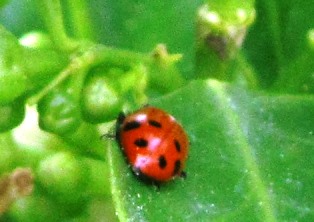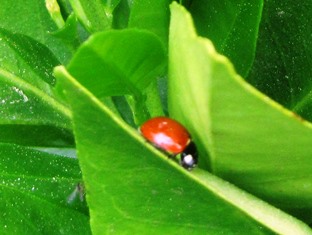The Farmette Welcomes a Proliferation of Ladybugs
Ladybugs, of late, are proliferating all over the Henny Penny Farmette and on my neighbors’ properties as well. On Sunday afternoon, the young daughters of a neighbor and I spent a lovely hour plucking ladybugs from the grass, placing them upon our hands, and watching them zip up and down our arms.
Ladybugs are beneficial to the gardens. It’s been estimated that during its life that lasts about a year, the average ladybug will consume 5,000 aphids, those soft-body pests whose larvae that dine on tender, young plant shoots.
Of the thousands of species of ladybugs in the world, only about 175 are found in California. By far, the Convergent Lady Beetle is most common and highly beneficial to California gardens.
The various varieties of ladybugs and other beneficial insects can keep in check populations of harmful pests so gardeners won’t have to resort to using insecticides and pesticides. A healthy, strong ecosystem is always best for organic gardens.
Female ladybugs are often larger than their male counterparts, depending on the species. Some have spots and some don’t. Their color isn’t limited to just red and orange, but can include a host of other hues. To learn more about ladybugs, see http://www.everything-ladybug.com/ladybug-facts.html.
A daily stroll around the farmette that includes a ladybug sighting tends to make me smile. I might even be heard whispering words of welcome. With the ladybugs here, I feel reassured that my organic fruits and vegetables are a little safer from the dreaded aphids.
 Facebook
Facebook Goodreads
Goodreads LinkedIn
LinkedIn Meera Lester
Meera Lester Twitter
Twitter





